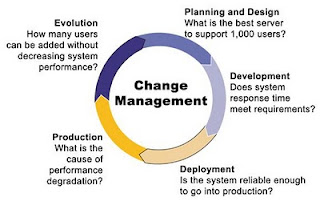Test Flow for Load Test
Test Flow for Load Test:
1. Design :
Activities included are
a. Gather Requirements
b. Design Test Strategy
c. Define Business Process
d. Define System Load
2. Build
Activities included are
a. Setup Test Environment
b. Record Test Scripts
c. Create Test Scenarios
3. Execute
Activities included are
a. Benchmark Testing
b. Performance Testing
c. Scalability Testing
d. Report Generation
4. Diagnose and Tuning
Activities included are
a. Diagnose Bottlenecks
b. Tune Configuration
c. Quantify Improvements
Entry Criteria for NFT (Non-Functional Testing) in Agile Methodology – There should not be any show stoppers present.
What is the purpose of a Load Test?
The purpose of any load test should be clearly understood and documented. A load test usually fits into one of the following categories:
Quantification of risk. - Determine, through formal testing, the likelihood that system performance will meet the formal stated performance expectations of stakeholders, such as response time requirements under given levels of load. This is a traditional Quality Assurance (QA) type test. Note that load testing does not mitigate risk directly, but through identification and quantification of risk, presents tuning opportunities and an impetus for remediation that will mitigate risk.
Determination of minimum configuration. - Determine, through formal testing, the minimum configuration that will allow the system to meet the formal stated performance expectations of stakeholders - so that extraneous hardware, software and the associated cost of ownership can be minimized. This is a Business Technology Optimization (BTO) type test.
Assessing release readiness by: Enabling you to predict or estimate the Performance characteristics of an application in production and evaluate whether or not to address performance concerns based on those predictions. These predictions are also valuable to the stakeholders who make decisions about
whether an application is ready for release or capable of handling future growth, or whether it requires a performance improvement/hardware upgrade prior to release.
Examples of Performance Test Objectives:
Performance Test Objective | Explanation |
Application response time | How long does it take to complete a task? |
Configuration sizing | Which configuration provides the best performance level? |
Acceptance | Is the system stable enough to go into production? |
Regression | Does a new version of the software adversely affect response time? |
Reliability | How stable is the system under a heavy work load? |
Capacity planning | At what point does performance degradation occur? |
Bottleneck identification | What is the cause of degradation in performance? |
Product evaluation | What is the best server for 100 users? |
What is a Business Process?
A business process is a set of actions or user steps performed within an application to accomplish a business goal.
Identifying business processes is crucial to designing realistic load test scenarios.
Examples of a Business Process:
For an Auction site Typical Business processes are:
- Browse
- Bid
- List items for selling
- Search
For a news site typical Business processes are:
- Using Streaming media to:
- listen to audio
- watch video
- Search
What functions or business processes should be load tested?
Basis for inclusion in Load Test
High frequency transactions - The most frequently used transactions have the potential to impact the performance of all of the other transactions if they are not efficient. Business processes that may not be mission-critical but are very popular.
For instance, an internal search engine may be an important and frequently used tool, even though it is not the primary reason for a user to visit the site.
The "heavily used" category also includes business processes associated with periodic or sporadic traffic. For instance, a home page may receive heavy traffic immediately after a marketing promotion. For Client / Server systems, login will receive heavy throughput.
Mission Critical transactions - The more important transactions that facilitate the core objectives of the system should be included. Transactions that your business depends on. Every mission-critical business process should be recorded and tested under load.
Mission-critical transactions for different applications vary
• Purchasing at an e-commerce site
• Searches at a search engine site
• Updated content display at a news site
• Downloading received orders or updating order status at a Client / Server system.
If you are unsure which processes are mission-critical, consult application experts or
your management team.Update Transactions - At least one update transaction should be included.
Read Transactions - At least one READ ONLY transaction should be included.
Dynamic Content - Any business process that relies on dynamic content is more likely to fail during periods of heavy load than one based on static content.
Some examples include:
- Functions that require database lookup
- Session ID Generation
- CGI script execution.
- Making a call to the database
- Streaming media broadcasting
- Dynamic page generation
Load Testing in the Product Life Cycle
Performance testing should begin as early as possible during the development cycle. Load testing is necessary throughout the product life cycle.


This is really a worthy and wonderful blog about Software Testing Companies in Chennai to read and further more tips on the Software Testing Companies in Bangalore have been learnt. thanks for sharing your views among us and its great time spending on this. I am waiting for new post here about Software Testing Services in Chennai and Please keep it up in future..
ReplyDelete